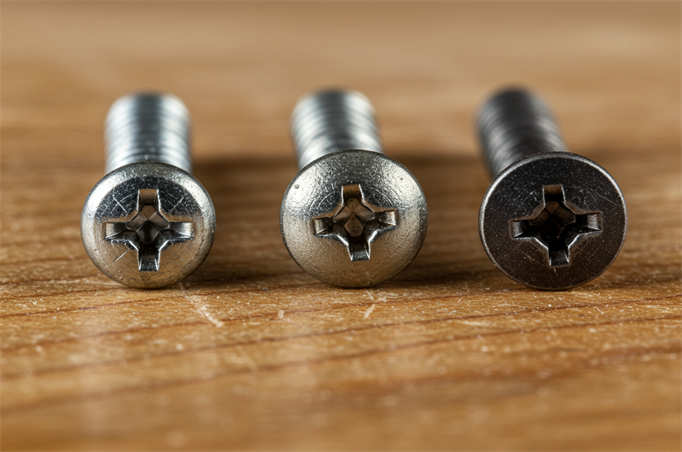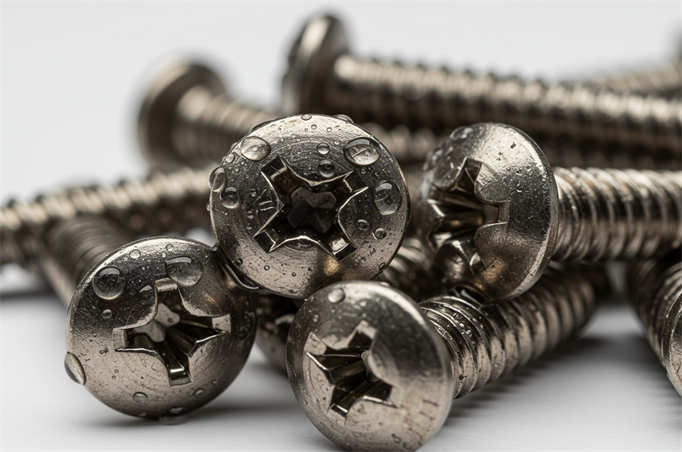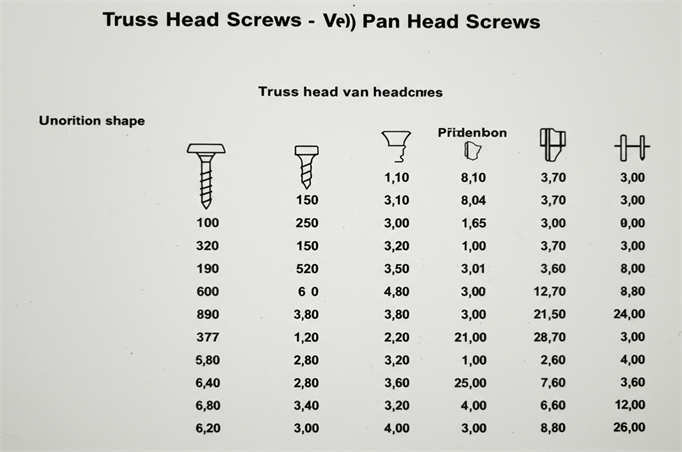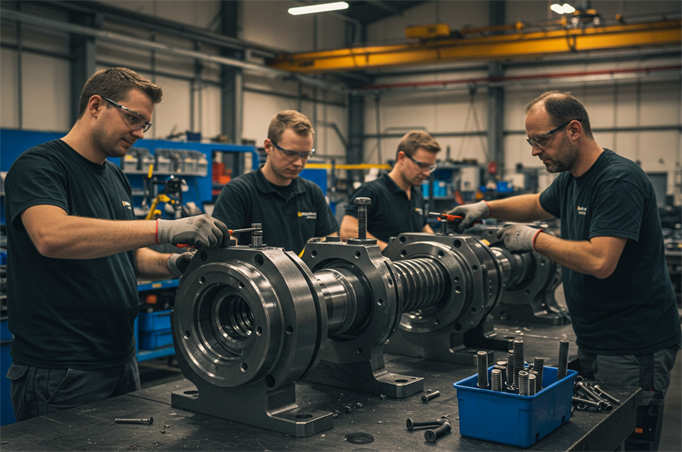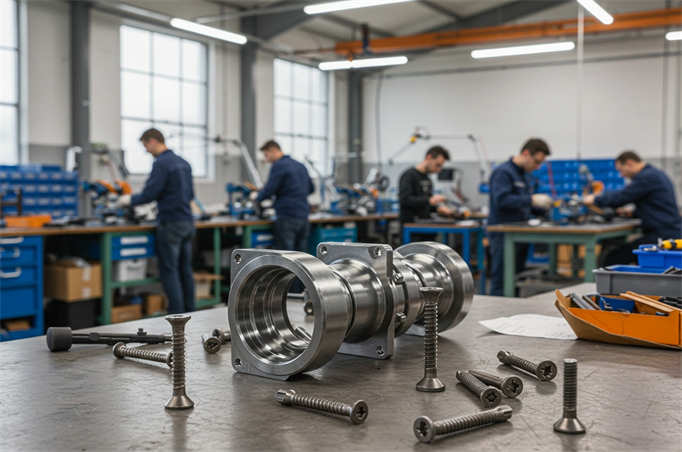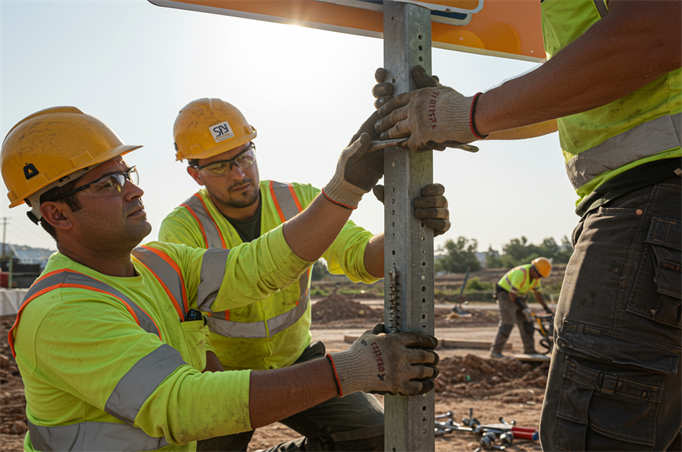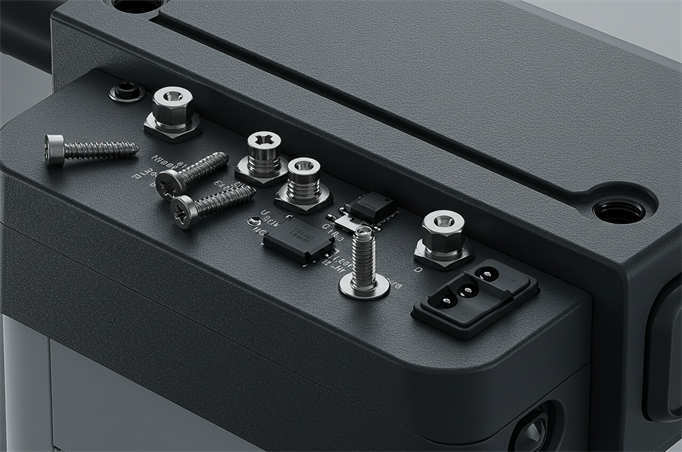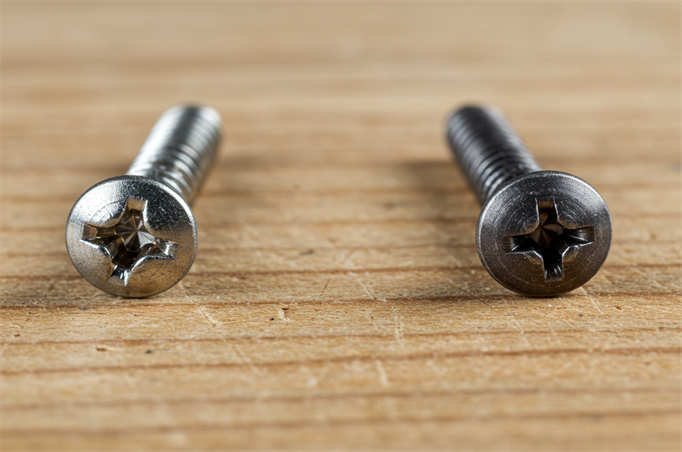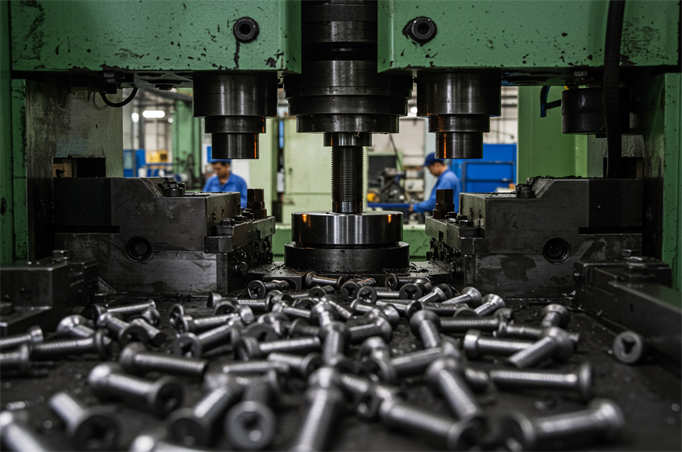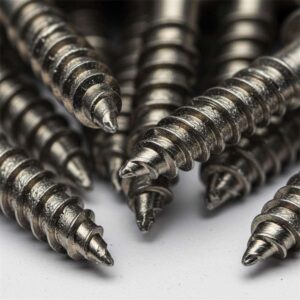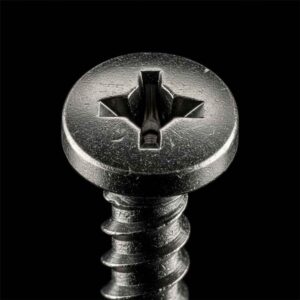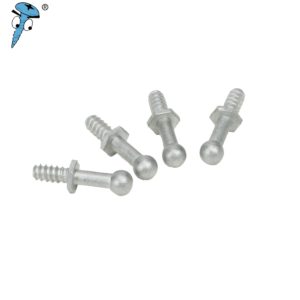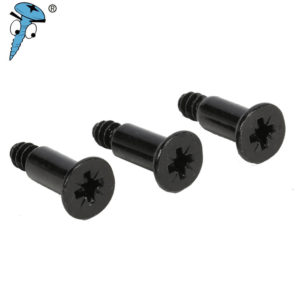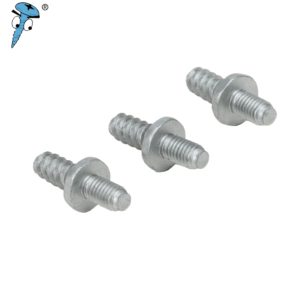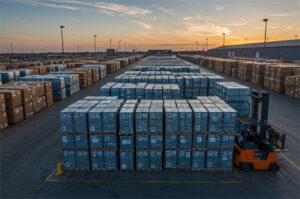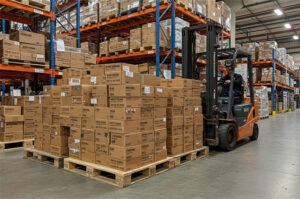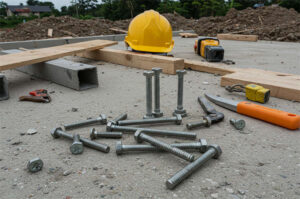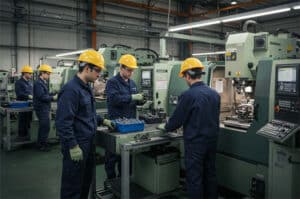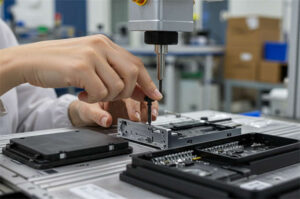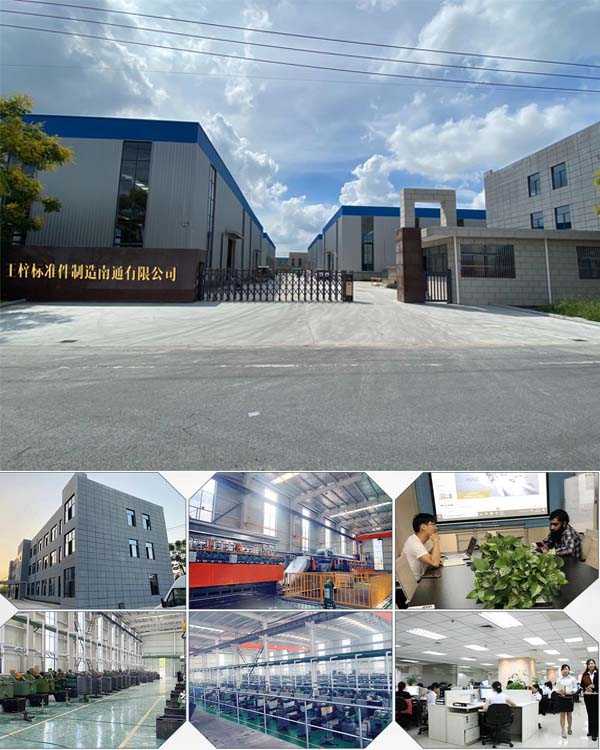Bienvenido a Prince Fastener, su socio de confianza en la industria de sujetadores. En el vasto mundo de las fijaciones, comprender las diferencias entre los distintos tipos es crucial para seleccionar el producto adecuado para su aplicación. específico necesidades. Hoy, profundizaremos en las distinciones entre tornillos de cabeza de cercha (comúnmente conocidos como tornillos de cabeza grande) y tornillos de cabeza plana. En Prince Fastener, estamos comprometidos a proporcionar con información completa y precisa para ayudarle a tomar decisiones con conocimiento de causa. Nuestra amplia experiencia y conocimientos en el campo de las fijaciones nos permiten ofrecer productos de alta calidad y soluciones profesionales. Tanto si se dedica a la construcción como a la fabricación o a cualquier otro sector que requiera elementos de fijación, nuestro objetivo es ayudarle a encontrar el elemento de fijación ideal para su proyecto. Así pues, exploremos las características, aplicaciones y ventajas exclusivas de los tornillos de cabeza plana y los tornillos de cabeza troncocónica. juntos, y descubra cómo Prince Fastener puede satisfacer todas sus necesidades de tornillería.
En Prince Fastener, sabemos que elegir el tornillo correcto es crucial para el éxito y la longevidad de sus aplicaciones industriales. Nos pregunta por las diferencias entre los tornillos de cabeza plana y los tornillos de cabeza de celosía:
La forma de la cabeza: Una característica definitoria
Tornillos de cabeza de cercha: Estos tornillos presentan una cabeza distintiva de perfil bajo, en forma de cúpula, con una amplia superficie de apoyo. Notará una transición suave y gradual de la cabeza al vástago. Este mayor diámetro de la cabeza proporciona una excelente fuerza de sujeción y distribuye la presión eficazmente por toda la zona de fijación.
Tornillos de cabeza plana: Los tornillos de cabeza plana presentan una superficie superior más plana, ligeramente redondeada y de menor diámetro que las cabezas de cercha. La parte inferior de la cabeza suele ser plana y carece de la pronunciada curva de conexión que se observa en las cabezas de cercha. Su perfil general es relativamente bajo y plano.
Tamaño y proporción: Comprender las dimensiones
Tornillos de cabeza de cercha: Por lo general, los tornillos de cabeza de cercha son de mayor tamaño, con vástagos más largos y cabezas más grandes. Por ejemplo, en conexiones mecánicas de alta resistencia o áreas que requieren una tensión significativa, a menudo encontrará tornillos de cabeza de cercha con diámetros que van desde unos pocos milímetros a diez milímetros o incluso... más grande.
Tornillos de cabeza plana: Los tornillos de cabeza plana suelen tener dimensiones más pequeñas. A menudo los vemos en las conexiones estructurales de maquinaria más pequeña y productos electrónicos, con diámetros normalmente dentro del rango milimétrico.
Escenarios de aplicación: Dónde brillan
Tornillos de cabeza de cercha: A menudo recomendamos tornillos de cabeza de cercha para aplicaciones que requieren una gran superficie de apoyo y conexiones estables. Por ejemplo, en conexiones de maderasu ancho El cabezal evita que una presión excesiva dañe el material. En el ensamblaje mecánico, destacan en la conexión de componentes que deben soportar importantes fuerzas de cizallamiento y tracción, tales como cierta puntos de conexión en estructuras de acero.
Tornillos de cabeza plana: A menudo vemos tornillos de cabeza plana utilizados en las conexiones internas de pequeños dispositivos electrónicos, como la fijación de componentes en teléfonos móviles y placas base de ordenadores. Su cabeza más pequeña facilita su aplicación en espacios reducidos. Además, en conexiones superficiales donde la estética importa, la cabeza plana de un tornillo de cabeza plana queda al ras, lo que contribuye a una apariencia más refinada.
Características funcionales: Rendimiento bajo carga
Resistencia a la tracción:
Tornillos de cabeza de cercha: Debido a su mayor tamaño, especialmente al mayor diámetro del vástago, los tornillos de cabeza de cercha ofrecen generalmente una mayor resistencia a la tracción. Mantienen la estabilidad de la conexión incluso bajo fuerzas de tracción importantes.
Tornillos de cabeza plana: Con sus reducidas dimensiones, los tornillos de cabeza plana tienen una resistencia a la tracción relativamente menor. Son adecuados sobre todo para conexiones con cargas ligeras.
Resistencia al corte:
Tornillos de cabeza de cercha: Cuando se someten a fuerzas de cizallamiento, la cabeza más grande y el vástago más grueso de los tornillos de cabeza de cercha les permiten soportar una tensión considerable.
Tornillos de cabeza plana: Aunque su resistencia al cizallamiento es comparativamente menor, un diseño e instalación adecuados, como el aumento del número de tornillos, pueden satisfacer cierta requisitos de resistencia al cizallamiento.
Proceso de fabricación: Cómo Están hechos
Tornillos de cabeza de cercha: La fabricación de cabezas de cercha requiere precisión, garantizando una transición suave entre la cabeza y el vástago para evitar concentraciones de tensiones. Dado su mayor tamaño, a menudo empleamos procesos de cabezalado en caliente o en frío.
Tornillos de cabeza plana: Los tornillos de cabeza plana son relativamente fáciles de fabricar, a menudo mediante técnicas de estampación en frío. La forma de su cabeza se forma fácilmente.
Tornillos de cabeza de cercha vs. Tornillos de cabeza plana: ¿Cuál funciona mejor en exteriores?
Tanto los tornillos de cabeza troncocónica como los de cabeza plana tienen sus propias ventajas, y su idoneidad para el uso en exteriores depende de las condiciones y requisitos específicos. He aquí una comparación para aplicaciones en exteriores:
Material y resistencia a la corrosión: Resistencia a la intemperie
Tornillos de cabeza de cercha: Fabricamos tornillos de acero al carbono y acero inoxidable. Los tornillos de acero al carbono ofrecen una gran resistencia, pero son susceptibles a la corrosión por la lluvia y la humedad en entornos exteriores. Los tornillos de acero inoxidable con cabeza de cercha presentan una excelente resistencia a la corrosión, soportan la niebla salina y la contaminación, por lo que son ideales para condiciones exteriores adversas.
Tornillos de cabeza plana: Al igual que las cabezas de cercha, fabricamos tornillos de cabeza plana en acero al carbono y acero inoxidable. Los tornillos de cabeza plana de acero al carbono suelen recibir tratamientos superficiales como el galvanizado o el niquelado para mejorar su resistencia a la corrosión para su uso general en exteriores. Los tornillos de cabeza cilíndrica de acero inoxidable tienen una mayor resistencia a la corrosión y son más resistentes a la corrosión. son ampliamente utilizados en entornos exteriores altamente corrosivos, como entornos marinos y químicos.
Diseño de la cabeza y distribución de esfuerzos: Manejo de la carga
Tornillos de cabeza de cercha: Su gran cabeza de cúpula de perfil bajo proporciona una importante superficie de contacto con el material fijado. Este les permite ofrecer una gran capacidad portante al resistir fuerzas cortantes, lo que los hace adecuados para conexiones exteriores que necesitan soportar cargas de cizallamiento importantes, como las estructuras de madera exteriores y las fijaciones de señalización.
Tornillos de cabeza plana: La cabeza más plana y ligeramente redondeada de los tornillos de cabeza plana tiene una superficie de contacto menor que la de los tornillos de cabeza de cercha. Su fijación depende de la interacción entre las roscas del tornillo y el material fijado. Ofrecen una buena resistencia a la tracción y son adecuados para aplicaciones exteriores, como la fijación de componentes de equipos de exterior.
Facilidad de montaje: Hacer el trabajo
Tornillos de cabeza de cercha: La cabeza más grande de los tornillos de cabeza de cercha puede presentar a veces limitaciones en zonas exteriores con espacio de instalación restringido. Sin embargo, la parte inferior plana de la cabeza proporciona una buena estabilidad durante la instalación, facilitando el manejo de la herramienta y la aplicación de fuerza.
Tornillos de cabeza plana: Su cabeza aerodinámica y de perfil bajo requiere menos espacio vertical para su instalación, lo que los hace más adecuados para entornos exteriores reducidos. Además, el diseño de los tornillos de cabeza plana permite acoplarlos fácilmente con diversas herramientas, tanto manuales como automatizadas, lo que permite un montaje rápido y eficaz.
Aspecto y escenarios de aplicación: Consideraciones estéticas
Tornillos de cabeza de cercha: La cabeza más grande y prominente de los tornillos con cabeza de cercha puede destacar en la superficie de los materiales conectados, lo que puede restar atractivo estético general en lugares exteriores donde la apariencia es importante. importante. Sin embargo, para grandes estructuras o equipos de exterior en los que la integridad estructural y la estabilidad son primordiales y la estética es secundaria, los tornillos de cabeza de cercha son una opción excelente.
Tornillos de cabeza plana: El diseño más discreto de la cabeza de los tornillos de cabeza plana queda a ras o ligeramente por encima de la superficie del material conectado, ofreciendo un acabado más limpio y estéticamente más agradable. Solemos recomendar los tornillos de cabeza plana para fachadas exteriores y carcasas de equipos electrónicos en los que la apariencia es un factor importante.
Consideraciones sobre costes: Equilibrio entre rendimiento y presupuesto
Tornillos de cabeza de cercha: Generalmente, los tornillos de cabeza de cercha son más grande y requieren más material, lo que puede suponer un coste ligeramente superior en comparación con los tornillos de cabeza plana fabricados con el mismo material y utilizando los mismos procesos de fabricación.
Tornillos de cabeza plana: Su menor tamaño y menor consumo de material suelen traducirse en un menor coste de producción. El uso de tornillos de cabeza plana en proyectos de exterior a gran escala puede contribuir a un ahorro significativo en gastos de tornillería.
Tornillos de cabeza de cercha frente a tornillos de cabeza plana: ¿Cuál ofrece mayor durabilidad para el montaje de equipos de exterior?
Cuando se trata de fijar equipos de exterior, tanto los tornillos de cabeza cilíndrica como los tornillos de cabeza cilíndrica ofrecen distintas ventajas, y su durabilidad depende de varios factores. He aquí un análisis detallado:
Material y resistencia a la corrosión: La base de la longevidad
Tornillos de cabeza plana: Solemos fabricar tornillos de cabeza plana de acero inoxidable y acero al carbono. Los tornillos de cabeza plana de acero inoxidable ofrecen una excelente resistencia a la corrosión provocada por la lluvia y la humedad. Por ejemplo, los tornillos de cabeza plana de acero inoxidable 304 funcionan excepcionalmente bien en entornos húmedos, por lo que son muy utilizados en equipos de exterior. Los tornillos de cabeza plana de acero al carbono suelen someterse a tratamientos superficiales como el cincado o el niquelado para mejorar su resistencia a la corrosión.
Tornillos de cabeza de cercha: Al igual que los tornillos de cabeza plana, fabricamos tornillos de acero al carbono y acero inoxidable. Aunque los tornillos de acero al carbono son propensos a oxidarse, los tratamientos superficiales como el galvanizado en caliente pueden mejorar su resistencia a la corrosión. Los tornillos de acero inoxidable con cabeza de cercha ofrecen una mayor resistencia a la corrosión, por lo que son adecuados para entornos exteriores exigentes.
Diseño global y eficacia de la fijación: Garantizar una sujeción segura
Tornillos de cabeza plana: Su cabeza más plana y ligeramente redondeada se asienta a ras o ligeramente por encima de la superficie de los componentes conectados, proporcionando un aspecto limpio tras la instalación. El diseño del vástago de los tornillos de cabeza plana proporciona una excelente fuerza de sujeción. En comparación con otros tipos de tornillos, es menos probable que se aflojen o desprendan con el tiempo.
Tornillos de cabeza de cercha: La cabeza de perfil bajo, en forma de cúpula, con una transición gradual hacia el vástago y una mayor superficie de apoyo, proporciona un contacto significativo con el material fijado. Este diseño ofrece una sólida capacidad portante al resistir fuerzas de cizallamiento, por lo que son ideales para conexiones exteriores que debe soportar importantes cargas de cizallamiento.
Montaje y mantenimiento: Consideraciones prácticas
Tornillos de cabeza plana: El diseño sencillo del cabezal facilita el acoplamiento de la herramienta, simplificando el montaje y desmontaje. A menudo, no se requieren orificios piloto, lo que agiliza el proceso de instalación. El diseño del vástago de estos tornillos proporciona bien fuerza de apriete, reduciendo el riesgo de aflojamiento debido a las vibraciones.
Tornillos de cabeza de cercha: La instalación puede requerir una alineación más cuidadosa debido al mayor tamaño de la cabeza. Una instalación incorrecta puede provocar daños en la cabeza y una conexión menos segura. Sin embargouna vez adecuadamente instaladoLa cabeza y el vástago más grandes pueden proporcionar una mayor resistencia a la tracción y al cizallamiento.
Implicaciones financieras: Equilibrio entre presupuesto y resultados
Tornillos de cabeza plana: Debido a su más sencillo diseño y menor uso de material, los tornillos de cabeza troncocónica suelen tener un coste de producción más bajo. Este puede traducirse en un importante ahorro de costes para las instalaciones de equipos exteriores a gran escala.
Tornillos de cabeza de cercha: Su mayor tamaño y mayor Los requisitos de material suelen suponer un coste ligeramente superior en comparación con los tornillos de cabeza plana.
Escenarios de aplicación: Adecuación de la fijación a la tarea
Tornillos de cabeza plana: Solemos recomendar tornillos de cabeza cilíndrica para equipos de exterior en los que la resistencia a la corrosión y la estética son importantes. importante, particularly for smaller electronic devices, electrical equipment housings, and outdoor applications with visual considerations.
Tornillos de cabeza de cercha: Los tornillos de cabeza de cercha son más adecuados para equipos de exterior de mayor tamaño, conexiones de estructuras de acero y otras aplicaciones que requieran una elevada resistencia al cizallamiento.
En general, para fijar equipos de exterior, si la resistencia a la corrosión y un aspecto limpio son las principales preocupaciones y el equipo no necesita soportar fuerzas de cizallamiento extremas, los tornillos de cabeza plana de acero inoxidable suelen ser la mejor opción. Sin embargo, si el equipo requiere una gran resistencia al cizallamiento o a la tracción y el espacio de instalación no es un problema, los tornillos de cabeza plana de acero inoxidable suelen ser la mejor opción. mayor los tornillos de cabeza de cercha son una selección más apropiada.
Gracias por acompañarnos en este viaje de exploración de tornillos de cabeza de cercha y tornillos de cabeza plana. En Prince Fastener, estamos orgullosos de nuestra variada gama de productos y nuestra capacidad para satisfacer las distintas necesidades de los clientes. Entendemos que cada proyecto tiene sus propias conjunto de requisitos y desafíos, y por eso nos se dedican a proporcionar no sólo sujetadores, sino soluciones a medida que garantizan el éxito y la durabilidad de su trabajo. Nuestros tornillos de cabeza troncocónica y tornillos de cabeza plana se fabrican con los más altos estándares de calidad, garantizando un rendimiento óptimo en diferentes entornos y aplicaciones. Ya sea en usted es Si está trabajando en un proyecto de construcción al aire libre, ensamblando equipos mecánicos o fabricando dispositivos electrónicos, tenemos la fijación adecuada para usted. Le invitamos a explorar nuestra amplia colección y a experimentar la diferencia de Prince Fastener. Póngase en contacto con nosotros hoy mismo para obtener más información sobre nuestros productos y servicios, y permítanos ayudarle a construir un futuro más sólido y fiable.
